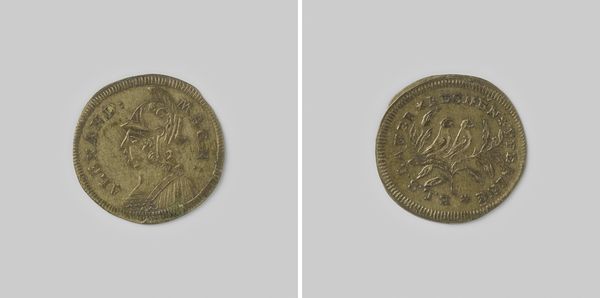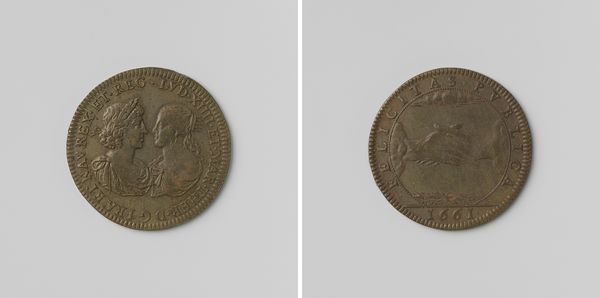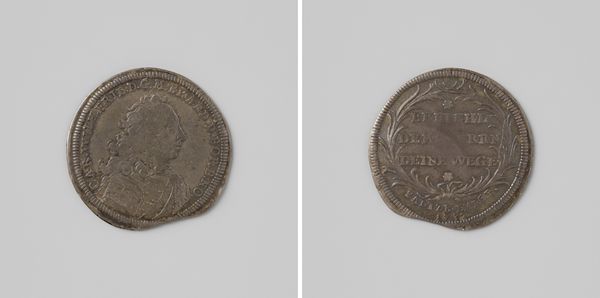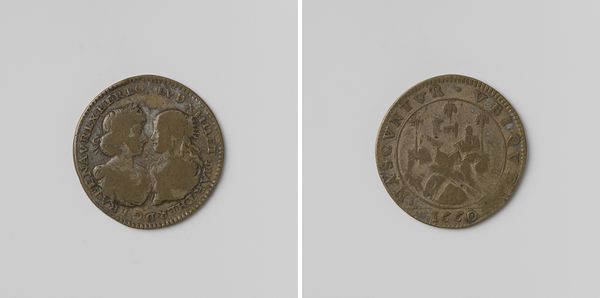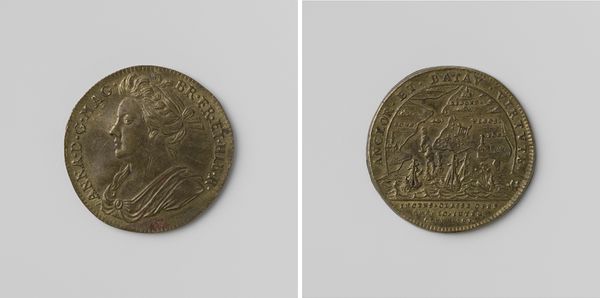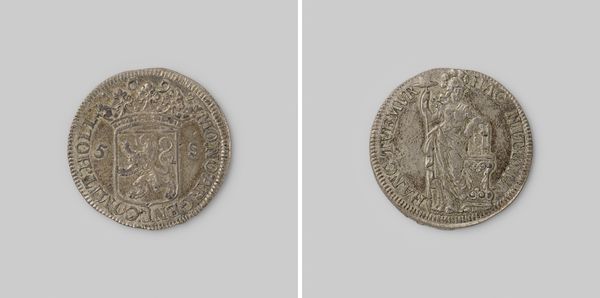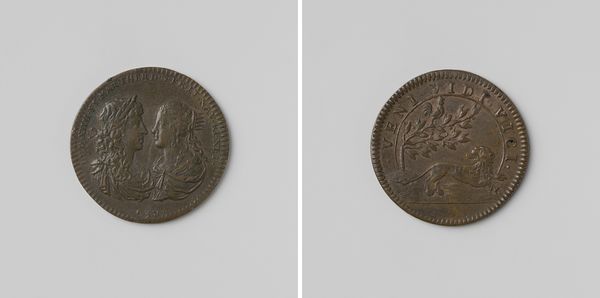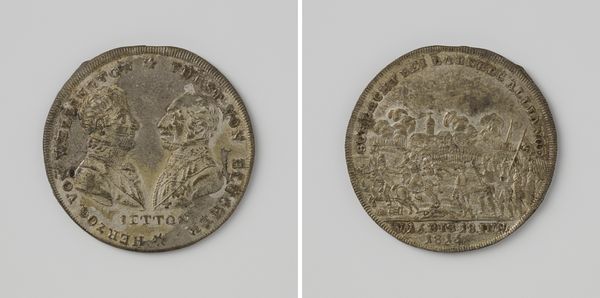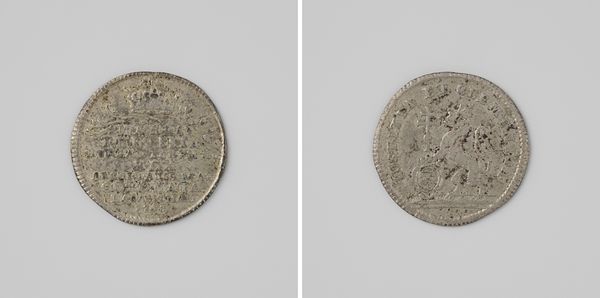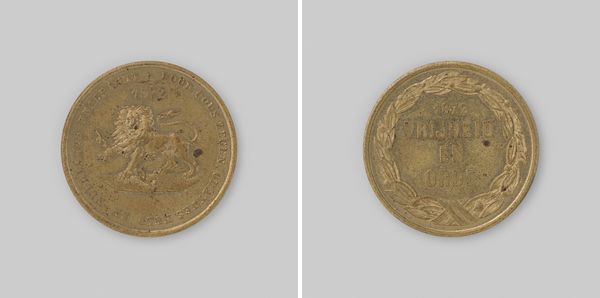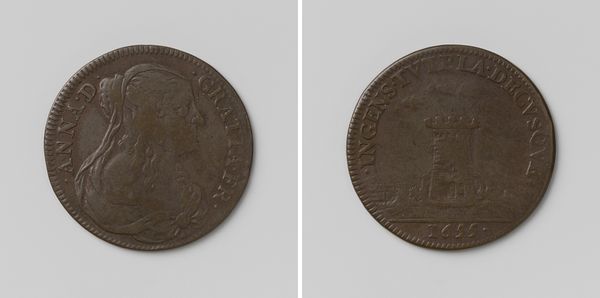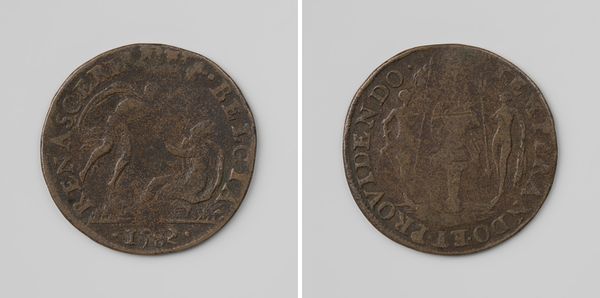
Rekenpenning uit Neurenberg met koning Lodewijk XVI van Frankrijk 1776 1776
0:00
0:00
metal, engraving
#
portrait
#
neoclacissism
#
metal
#
engraving
Dimensions: diameter 2.5 cm, weight 3.05 gr
Copyright: Rijks Museum: Open Domain
Curator: Here we have a close up view of a Rekenpenning, or reckoning penny, crafted in Nuremberg around 1776 by Johann Christian Reich. The metalworking gives it an interesting feel. Editor: The relief is fascinating – a bit worn, but you can feel the care put into such a small object. It seems a paradox, doesn’t it? Such effort cast for something that would be repeatedly traded, carried, circulated. Curator: These weren’t exactly circulating currency. Think of them more as tokens, aids for calculations done on counting boards. Nuremberg was renowned for their production, and their popularity spread widely across Europe. This one bears the image of Louis XVI, King of France at that time, right before the revolution. Editor: Knowing it's from 1776... the impending revolution really colors it, doesn’t it? The material feels almost tragic, like a monument cast far in advance of collapse. What metal would they use to achieve something like this? The color gives me the feeling it is a form of brass or perhaps low grade silver. Curator: You can see elements of Neoclassicism in it, the portrait of Louis has those austere, idealized features. But let’s think about its distribution, how this seemingly innocuous object embedded with political symbolism makes it to other European courts. They played a small role in a larger system, right? Editor: Absolutely, the production aspect is key. It's an item meant to facilitate one set of material transactions—finances—while subtly transmitting symbols related to royal power, right as its foundations were eroding. Someone labored to create the tools that made the matrix, the stamp for these…each action having implications. Curator: And its survival makes it poignant. That such a small object connected to the great events and players is really very compelling when you stop and consider the economics of its making in relation to other court ephemera like pamphlets and paintings, objects that survive to convey important ideas. Editor: Yes, the act of repeatedly minting that image – its proliferation – must have had some impact. Thank you for offering a clear socio-historical point. It definitely makes you think about art’s purpose.
Comments
No comments
Be the first to comment and join the conversation on the ultimate creative platform.
